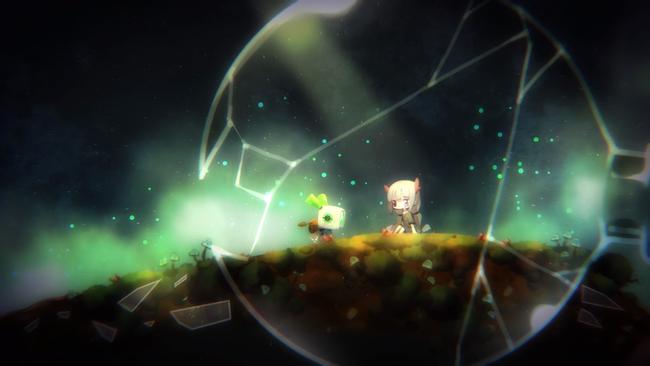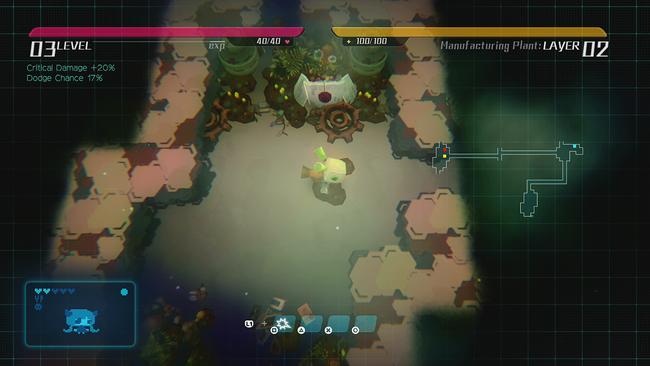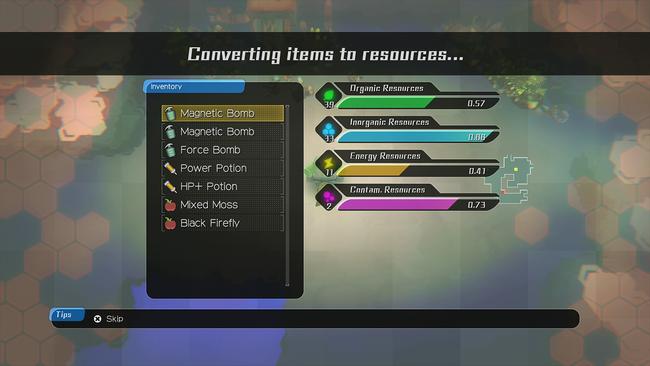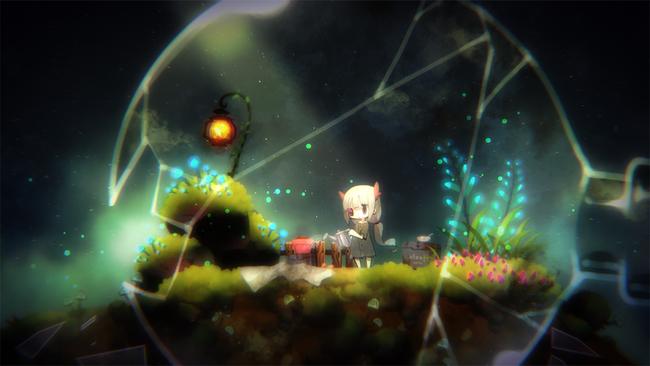
Void Terrarium Review
Nippon Ichi Software is most known for the Disgaea strategy RPG series, but the Japanese publisher continues to put out numerous other game projects not tied to established franchises. I appreciate the dedication to these, for sure, as it allows creators to break away from the conventions of a brand or the canon of a storyline to try out some fresh ideas.
One of NIS's newest games is Void Terrarium (stylized as 'void tRrLM(); //Void Terrarium'), a roguelike style RPG from the creative team behind A Rose in the Twilight and htoL#NiQ: The Firefly Diary.

The premise of Void Terrarium is a simple one. You play as a robot, nicknamed Robbie, who lives in a wasteland world where humanity no longer exists. However, you stumble across a lone human girl, given the name Toriko, and you begin work to protect & nurture her from the harsh, now-contaminated planet. To do this, you must venture out into the wasteland to collect components to construct and maintain a terrarium for Toriko to live in. The game remains relatively light on narrative from here, but your goal is clear: a young girl is relying on you to keep her healthy and safe.
At its core, Void Terrarium is a roguelike. Every time you go into one of the game's dungeons, you start again at level 1. You then explore randomized dungeon floors (like the ones you expect to see in a Mystery Dungeon game), search for the entrance to the next floor, all while taking on various enemies in a turn-based fashion. As you gain EXP, you'll gain new passive skills at each level-up, which are randomly selected for you out of a large pool of possible bonuses. Some example bonuses include raising attack or defense stats, improved chance to critical, improved chance to dodge, HP absorption capability, and many others to make your trek a little bit easier.
Void Terrarium gets the basics done right. It's a snappy game with intuitive controls and a user interface that's pretty easy to get accustomed to. The game goes for a somber, more moody tone, with a muted color palette and many parts of the soundtrack offering relaxing piano or electronic style music. As with any roguelike game, a fair bit of randomness is involved, and depending on what items you find and what passive bonuses you get at level-ups, your experience each time you enter a dungeon will be different from the last.
While you are out in the dungeon, traps and status effects are commonplace. You'll have to manage a combination of poison, confusion, silence, slow, and other maladies often. These sorts of elements aren't unusual in this style of game, but Void Terrarium does seem to implement them more frequently than other similar titles, and sometimes they can get pretty annoying.

Alongside these roguelike mechanics is a system most easily compared to Tamagotchi: little electronic toys where you take care of a digital pet. In the case of Void Terrarium, of course, you have to take care of Toriko while you explore the various labyrinths. She's only a little girl, and you can't leave her alone forever. She'll get hungry and you'll need to feed her with items found in the dungeon. Occasionally she'll get sick, and you'll need to find a way to aid her recovery. She even leaves messes in the terrarium that you'll need to clean up every once-in-a-while. As you explore, you'll see a persistent icon of Toriko and her condition at the bottom corner of the screen.
For what it's worth, I never felt like taking care of Toriko was too much of a hassle. As long as you feed her and clean the terrarium each time you set off for a dungeon, you'll be able to get pretty far in before she'll need something from you. She effectively works as your time limit, in a way. The longer you stay in the dungeon, the needier she'll become. The further you progress in the game, however, Toriko becomes more and more self-sufficient.

Void Terrarium does have a fair bit of locked, permanent progression baked into its mechanics as well, so you are not starting from scratch each time you leave a dungeon. Your main goal in the dungeons is to collect materials to craft items for Toriko's terrarium. However, for the most part, you are not seeking out specific itemized components. Instead, you are seeking four different material currencies you can use to build a variety of items. These come in four colors: green, blue, yellow, and pink.
There are a few exceptions to this rule. You can find blueprints in the dungeons, which are needed to make new items, as well as some special materials needed for a few bespoke creations. For the most part, though, the main thing you are working on collecting are the four color currencies. Like much of the rest of the game, this simplified goal keeps things uncomplicated, and you largely don't have to worry about seeking some specific item or drop to make progress.
When you leave the dungeon, whether you leave intentionally or are defeated, most of the items you picked up are then broken down into these four resource currencies. From here, you can then start to craft your items. Most of the items you craft are specifically for Toriko's terrarium, but you can also craft a few components for Robbie that can make dungeon trekking a little easier.
Here's the key thing about progression in Void Terrarium. For each terrarium item you craft for the first time, Robbie gains a permanent bonus to one of his stats, such as attack, defense, or HP. There are also some items that improve Toriko or the terrarium itself, such as bonuses that keep Toriko full for longer, or bonuses that keep the terrarium cleaner. These permanent bonuses make it easier for Robbie to dive deeper into dungeons, as Toriko can be left by herself for longer periods of time. Since you'll gain some material currency each time you enter a dungeon, and you never lose this currency unless you craft something, you never feel like any single dungeon trek was a waste. It's a good, simple balance for those who like roguelike style but also need some sort of permanent progression.

Void Terrarium also does have quite a few tertiary gameplay systems in effect, involving ways to bend the game's randomness in your favor, but to detail all those systems here with text would probably make it all sound more confusing than it actually ends up being. The game does a pretty nice job introducing all the various mechanics to game piece by piece, easing the player into everything rather than info-dumping all the systems all at once.
The area where Void Terrarium falls most flat is in its dungeon variety and design. There are about 8 different dungeons in the game, but they all generally appear similar to one another, they all generally work in the same way, with even similar enemies found within each. Some dungeons do lean more towards organic enemies, while others lean toward robotic enemies, but even still, it's only a slight change in the variety. If there wasn't a label in the corner of the UI telling me which dungeon I was in, I'd probably completely forget a few floor downs.
The game also generally keeps the same flow throughout the entirety of its 25-hour runtime. You explore a dungeon to get materials to craft items, return to take care of Toriko for a little bit, and leave to explore another dungeon for more items. Given that the dungeons begin to blend together, and that you are doing the same things in each, and there aren't any unique boss-type fights to mix things up, Void Terrarium does get a bit repetitive. There is a solid feel of progression underneath the roguelike systems, but ultimately the game does end up feeling just a little bit thin in substance.
Void Terrarium is a solid, simple roguelike with a neat style and endearing premise. It's doesn't do anything exceptional to stand at the peak of the genre, but it offers a satisfying experience and is generally a relaxing game. It stumbles a bit in gameplay variety and doesn't offer anything in terms of dense mechanics or an intricate storyline, but still manages to be a charming experience for those wanting something lighter in their roguelikes.